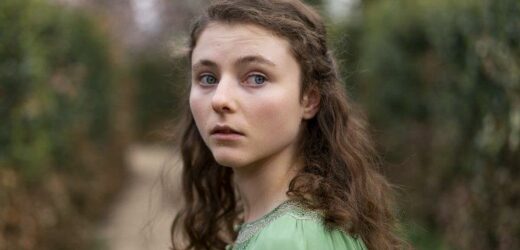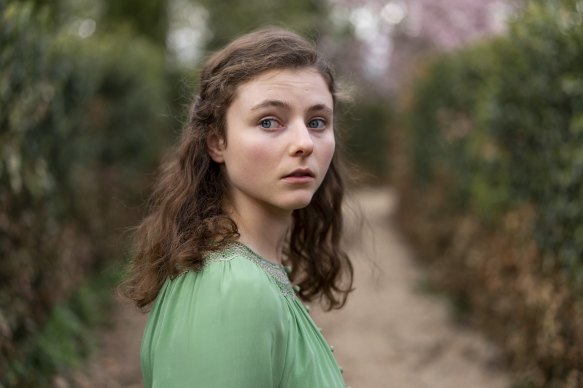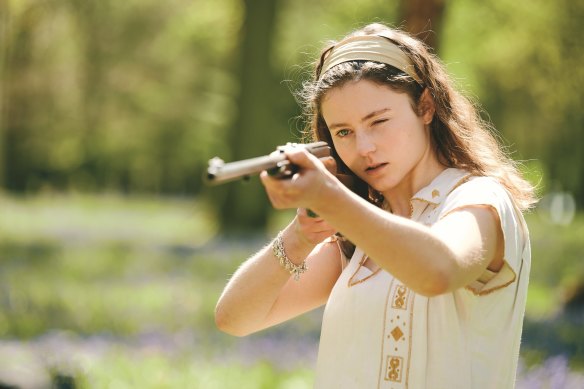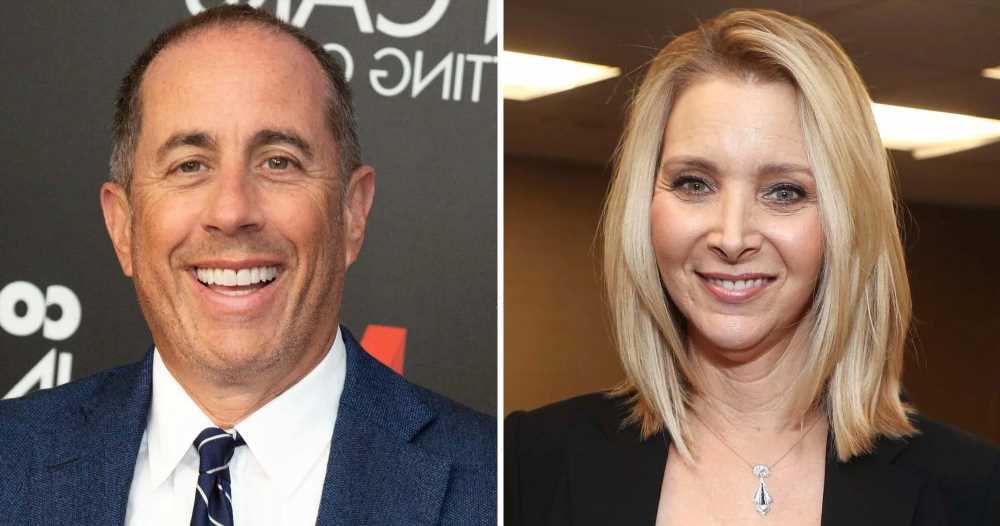Life After Life ★★★★★
Based on the 2013 novel by Kate Atkinson (who also co-wrote the screenplay), this four-part BBC adaptation is a glorious realisation of the book – not an easy task given its philosophical nature: a central character who is given several chances at life, being reborn again and again.
Thomasin McKenzie as Ursula Todd.
Life After Life opens with Sylvie Todd (Fleabag’s Sian Clifford) in labour with her third child in the winter of 1910. Her husband Hugh (James McArdle) is away, and a snowstorm has held up the doctor. The baby, a girl, is born dead, the umbilical cord wrapped around her neck. In the next scene, the action is rewound to Sylvie’s labour again, but this time, the doctor has made it, and saves the baby. Narrator Lesley Manville (both soothing and, with this kind of story, necessary) tells us: “Baby Ursula doesn’t know this is her second life, but already she has an instinct: the world is a dangerous place.”
The first episode focuses on Ursula’s childhood (when she’s played by Isla Johnston), spent in her comfortable upper middle-class bucolic home, shared with grumpy housekeeper Mrs Glover (Jessica Hynes) and Bridget, the superstitious Irish maid (Maria Laird).
But wealth is no shield from life’s dangers. Hugh soon leaves to fight in the Great War, and before she’s 10 Ursula has already lived several short lifetimes, taken by a rip at the seaside, an accident from a high window, and the Spanish flu – three times.
For reasons never explained nor fully understood, Ursula continues to die (often in truly awful circumstances) and be reborn; there is no “message” or, really, much by way of any conclusion. Instead, it’s an unusual meditation on the paths our lives can take, and the “what ifs” we all experience.
Ursula in another of her many lives.
As the adult Ursula, played by New Zealand actress Thomasin McKenzie (JoJo Rabbit, Last Night in Soho), says, the words “what if” are “the two best words in the English language”.
When Sylvie sends Ursula to a psychiatrist, he introduces her to the theory of reincarnation, and ideas of embracing one’s fate, but still her unusual predicament remains a mystery. And still she continues her cycle, her experiences each time veering in different directions; in one, after she is raped by a friend of her brother’s, ending up gravely ill following an illegal abortion, Sylvie all but disowns her, and Ursula takes to drink before marrying a man who turns out to be a violent conman.
In her next do-over, in which she avoids the rapist’s advances, she studies at Oxford, ending up in Germany teaching English, just before the outbreak of World War II.
There are more deaths, and more lives (I won’t spoil them), many interwoven with historical events in wartime London and Germany (in one, she even has an encounter with Hitler). But really the overarching story is that of the Todd family, whose members are sometimes affected by Ursula’s different paths.
It’s such a fully realised world, beautifully written and directed (by Brooklyn’s John Crowley), that Life After Life’s lack of traditional storytelling is, despite so much suffering and death, rather life-affirming.
Life After Life is on BritBox from August 18.
Find out the next TV, streaming series and movies to add to your must-sees. Get The Watchlist delivered every Thursday.
Most Viewed in Culture
From our partners
Source: Read Full Article



